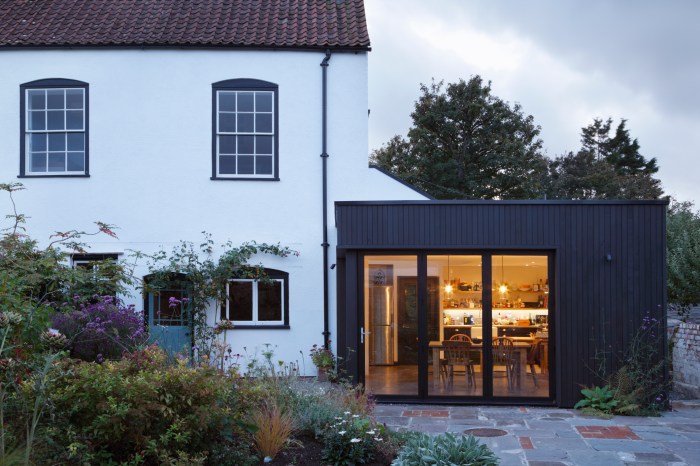By R. W. Fischer Andrew Hoffman was running his hands through a stand of phragmites growing in the soft muck by the side of a Saltaire walk several years ago. He grasped one stalk in the palm of his hand to break it off, which it did, but not before slicing a clean, painless and very deep incision across his hand, unleashing a gusher of blood. How such a simple plant could do this is a secret hidden inside a deceptively simple design.Phragmites is the ubiquitous marsh reed of Fire Island and beyond. It grows in marshy puddles of the Adirondacks as easily as it grows along the Nile River. It explodes from the ground in the springtime, growing to well over 10 feet tall in a matter of weeks, untouched by the deer who find privacy in its thick stands. In August, it forms seed plumes, then dies back to a woody stalk that stands for years to come. The sound of wind blowing through phragmites is that of white noise, masking other sounds and lulling us to sleep. Howling gales are no match for these benign plants that bend and twist but cannot be overcome.The plant has been around forever. Ancient Egyptians used phragmites in reed instruments and as a source of paper. The Greeks use it for fencing. The soft inner portions can be made into a flour for bread. On Fire Island it is a source of privacy. A few feet of phragmites is enough to hide a deer or a person or a house. Phragmites is not a native plant. Fifty years ago is was not very widespread: but once established it expanded quickly into our marshy, brackish meadows. At one time the DEC actually encouraged its growth, praising the web-like network of roots for their ability to stabilize the soil and control erosion. When mosquito control canals fell out of favor, the flow of salt water diminished in our wetlands fueling the phragmites free-for-all. And coincidentally, mosquitoes.Phragmites is not universally desired. Connecticut recently launched several phragmites eradication programs, with the goal to reintroduce native species. It is a slow process. Phragmites grows from a root system built like a thick jute rug lying one or two feet below ground, tightly interconnected. A fragment of that root can regenerate a new colony. The roots are thick and durable, funneling huge amounts of nutrients from where they are abundant (like cesspools) to where it is needed (like a sandy area). Connecticut’s eradication method involves cutting the plants to the ground in the winter and applying light amounts of herbicide at critical times to weaken the plants. These programs have been running for several years with limited success.The structure of phragmites is a marvel of design: light, flexible, and very strong. Pull the top stem on a growing phragmites: it comes up cleanly and easily, a foot or two of soft green growth. Astonishingly, the bottom will be so flat you will think it was cut with a knife. Leaves grow from the sides of the stalk, each connected to a thin outer growth ring. Unfurl the outer ring to reveal the secret to the flexibility of this plant: a series of overlapping rings of soft growth. Each layer wraps the center. Each lap alternates between clockwise and counterclockwise. If the top layer wraps the plant in a clockwise direction, the layer underneath will wrap the plant in the opposite direction. Try as I might to find the engine behind this symmetry, I found nothing. Many layers wrap a central core.At the core of the section there is a thin, flexible straw: the fluid engine for this growing machine. Sap flows up this straw, pushing the innermost part upwards, forcing the layers to unwrap as they thicken and mature. When done, there is a hollow tube of extraordinary suppleness and strength. Fixed in the walls of this tube are the capillaries, the straws, the fluid supply chain for what lies above, running vertically along the stem the way high quality packing tape contains string to reinforce its strength.Each joint in the bamboo-like inner portion is covered by an outer layer. Since each layer alternates its direction of growth, there is no weakness when the plant rotates in the wind. Forces are distributed evenly throughout the plant. Try to cut the lower sections with a knife and it will resist, just like cutting across reinforced shipping tape. This plant needs no reinforcement, it could be the model by which these things were designed.When Andrew grasped that stalk he stressed every inch of the structure almost equally, forcing it to break at a bend in a hollow section, its only weakness. The core split before breaking, stressing the straw capillaries and forcing them to separate into thin sections of relatively dry material, each section strong along its long axis. How strong? Stronger than he anticipated. Strong enough to reveal a remarkably well designed plant. Strong enough to be a model of how strength can be deceptively hidden behind a flexible facade. Strong enough to be a life lesson to us all.
Andrew Hoffman was running his hands through a stand of phragmites growing in the soft muck by the side of a Saltaire walk several years ago. He grasped one stalk in the palm of his hand to break it off, which it did, but not before slicing a clean, painless and very deep incision across his hand, unleashing a gusher of blood. How such a simple plant could do this is a secret hidden inside a deceptively simple design.Phragmites is the ubiquitous marsh reed of Fire Island and beyond. It grows in marshy puddles of the Adirondacks as easily as it grows along the Nile River. It explodes from the ground in the springtime, growing to well over 10 feet tall in a matter of weeks, untouched by the deer who find privacy in its thick stands. In August, it forms seed plumes, then dies back to a woody stalk that stands for years to come. The sound of wind blowing through phragmites is that of white noise, masking other sounds and lulling us to sleep. Howling gales are no match for these benign plants that bend and twist but cannot be overcome.The plant has been around forever. Ancient Egyptians used phragmites in reed instruments and as a source of paper. The Greeks use it for fencing. The soft inner portions can be made into a flour for bread. On Fire Island it is a source of privacy. A few feet of phragmites is enough to hide a deer or a person or a house. Phragmites is not a native plant. Fifty years ago is was not very widespread: but once established it expanded quickly into our marshy, brackish meadows. At one time the DEC actually encouraged its growth, praising the web-like network of roots for their ability to stabilize the soil and control erosion. When mosquito control canals fell out of favor, the flow of salt water diminished in our wetlands fueling the phragmites free-for-all. And coincidentally, mosquitoes.Phragmites is not universally desired. Connecticut recently launched several phragmites eradication programs, with the goal to reintroduce native species. It is a slow process. Phragmites grows from a root system built like a thick jute rug lying one or two feet below ground, tightly interconnected. A fragment of that root can regenerate a new colony. The roots are thick and durable, funneling huge amounts of nutrients from where they are abundant (like cesspools) to where it is needed (like a sandy area). Connecticut’s eradication method involves cutting the plants to the ground in the winter and applying light amounts of herbicide at critical times to weaken the plants. These programs have been running for several years with limited success.The structure of phragmites is a marvel of design: light, flexible, and very strong. Pull the top stem on a growing phragmites: it comes up cleanly and easily, a foot or two of soft green growth. Astonishingly, the bottom will be so flat you will think it was cut with a knife. Leaves grow from the sides of the stalk, each connected to a thin outer growth ring. Unfurl the outer ring to reveal the secret to the flexibility of this plant: a series of overlapping rings of soft growth. Each layer wraps the center. Each lap alternates between clockwise and counterclockwise. If the top layer wraps the plant in a clockwise direction, the layer underneath will wrap the plant in the opposite direction. Try as I might to find the engine behind this symmetry, I found nothing. Many layers wrap a central core.At the core of the section there is a thin, flexible straw: the fluid engine for this growing machine. Sap flows up this straw, pushing the innermost part upwards, forcing the layers to unwrap as they thicken and mature. When done, there is a hollow tube of extraordinary suppleness and strength. Fixed in the walls of this tube are the capillaries, the straws, the fluid supply chain for what lies above, running vertically along the stem the way high quality packing tape contains string to reinforce its strength.Each joint in the bamboo-like inner portion is covered by an outer layer. Since each layer alternates its direction of growth, there is no weakness when the plant rotates in the wind. Forces are distributed evenly throughout the plant. Try to cut the lower sections with a knife and it will resist, just like cutting across reinforced shipping tape. This plant needs no reinforcement, it could be the model by which these things were designed.When Andrew grasped that stalk he stressed every inch of the structure almost equally, forcing it to break at a bend in a hollow section, its only weakness. The core split before breaking, stressing the straw capillaries and forcing them to separate into thin sections of relatively dry material, each section strong along its long axis. How strong? Stronger than he anticipated. Strong enough to reveal a remarkably well designed plant. Strong enough to be a model of how strength can be deceptively hidden behind a flexible facade. Strong enough to be a life lesson to us all.

























